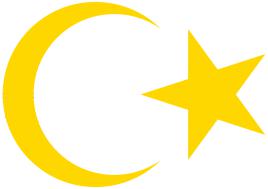

The state of Libya (Arabic: دولة ليبيا, English: state of Libya) is a country in North Africa, located on the South Bank of the Mediterranean Sea, adjacent to Egypt, Sudan, Chad, Niger, Algeria and Tunisia. It covers an area of 1759500 square kilometers.
Libya once belonged to Carthage, ancient Rome, the Arab Empire and the Ottoman Empire. In 1912, Italy defeated the Ottoman Empire and Libya became a colony of Italy; After World War II, Libya became independent in 1951 and established the United Kingdom of Libya with a federal system, in 1963, the federal system was abolished and renamed the kingdom of Libya. In September 1969, the " Free Officers Movement " led by Gaddafi launched a coup to establish the Libyan Arab Republic, which was later renamed the Great Socialist People's Republic of Arab Libya. In 2011, A civil war broke out against Gaddafi in Libya, and the regime collapsed. In May 2013, the name of the country was changed to Libya, but the conflict has continued since then.
Libya has long implemented a single state-owned economy, relying on rich oil resources, once rich in Africa, but due to the instability of the situation, the oil export was once stagnant. After the end of the civil war in Libya, the central government of Libya established a special armed oil field for protection, and oil production and export volume once returned to the prewar level, however, in the second half of 2013, the leader of the oil protection force, Jadeland, fell out with the central government and controlled the main oil ports in the Middle East. Libya's oil exports plummeted.
More than 95% of Libya is desert and semi desert. Most of the areas are low plateaus with an average elevation of 500 meters and are divided by broad lowlands. Narrow Plains are along the northern coast. The desert and semi desert account for more than 90% of the total area; the northwest and South are mostly conglomerate desert and rocky desert; the rest are desert with oasis.
